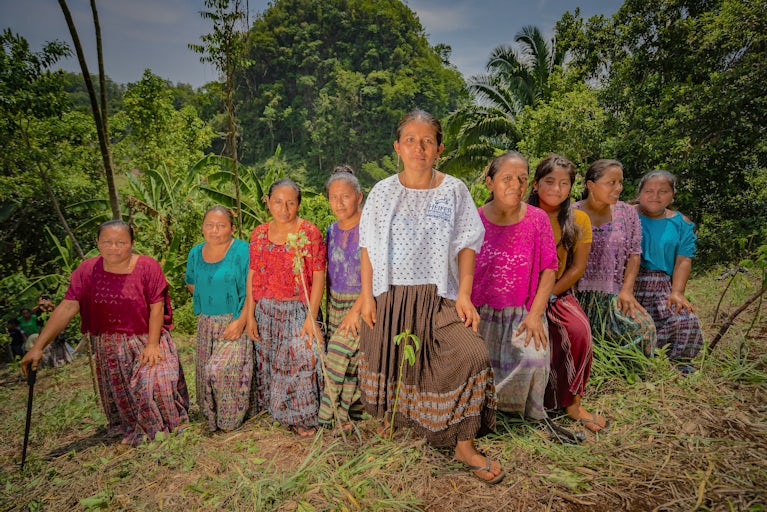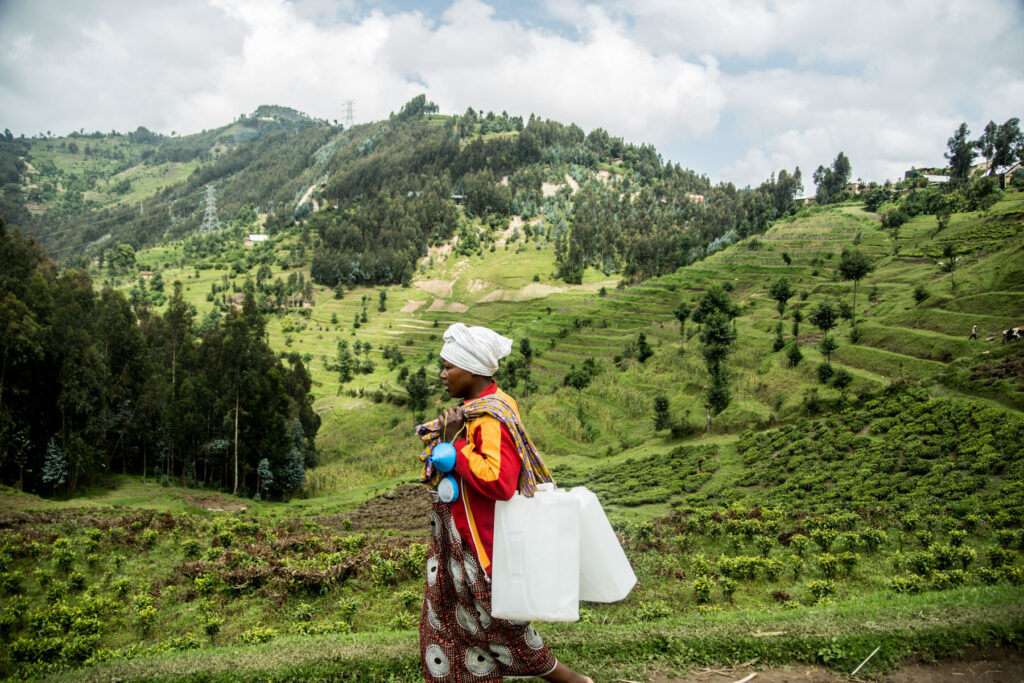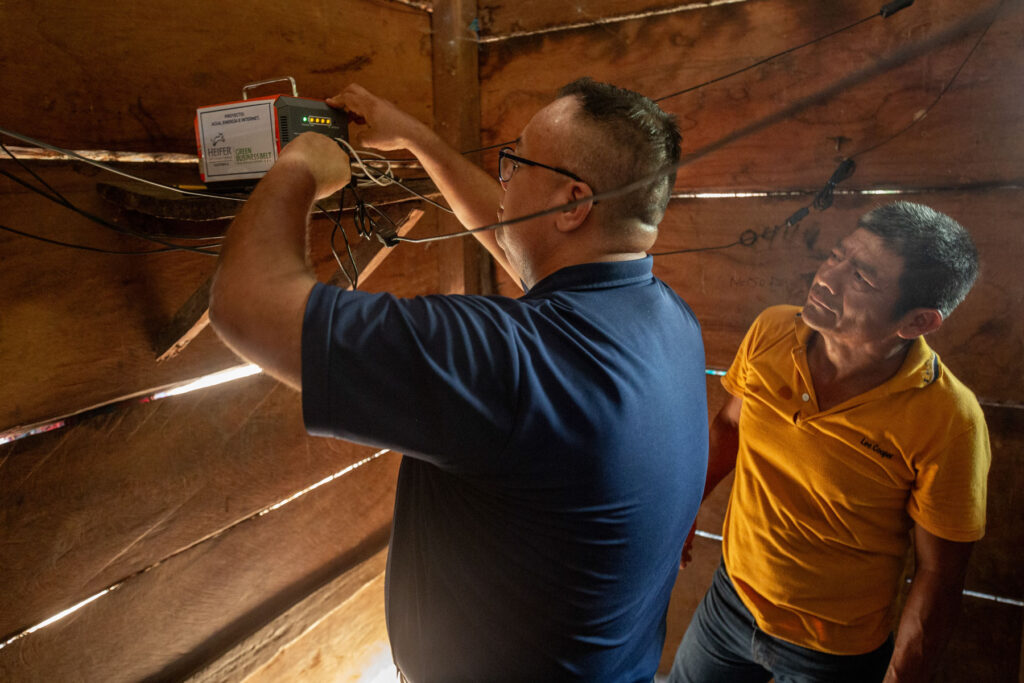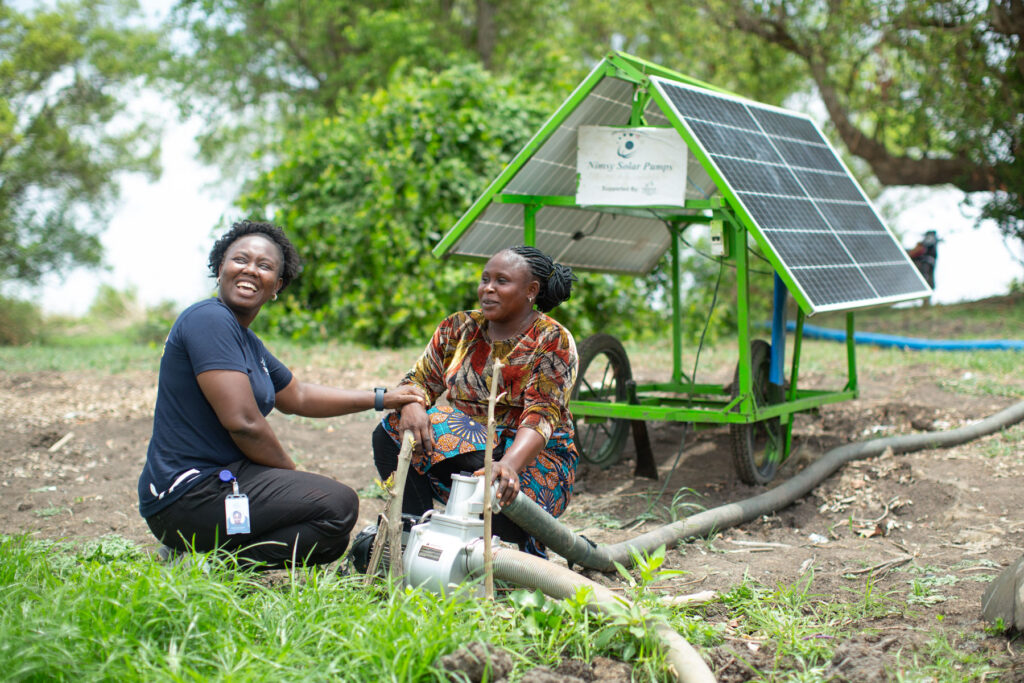
Why are Women Important in Farming?
By Heifer International | June 22, 2022
Electricity is important in agriculture because it powers irrigation systems, enhances storage and processing facilities, and supports modern farming technologies. Electricity is used across a wide range of agricultural uses, including crop yield enhancement, seed germination, pest resistance, nutrient management, and innovative farming methods such as vertical farming and space agriculture. Access to reliable electricity provides significant benefits in agriculture, such as increased efficiency, reduced costs and improved crop yields. It also increases productivity, reduces post-harvest losses, and contributes to higher yields, better livelihoods for farmers, and greater sustainability and environmental impact in agricultural practices.
Early each morning, Charlotte Nizeyimana slings empty jugs over her shoulder and sets off along a shrub-lined path through green hillsides from her home in rural Rwanda to her nearby farm. Once there, she fills the plastic containers with milk from her family’s dairy cows and returns to the trail for her final destination, the Rambura Milk Collection Point.
Constructed with Heifer’s support, the collection point serves as a site for smallholder farmers like Charlotte to gather and store their milk in bulk. Large, refrigerated tanks prevent the milk from spoiling, opening the doors for farmers to earn a more substantial — and reliable — household income. And it’s all only possible because of what keeps the lights on and the tanks cool: electricity.

Access to electricity touches almost all aspects of farmers’ lives and livelihoods, from sowing seeds to irrigation to keeping harvested produce fresh before it reaches markets. The kind of energy infrastructure many take for granted in developed nations is critical to meeting the United Nations Sustainable Development Goals and Heifer’s mission.
Affordable, reliable and sustainable energy is at the heart of the effort to combat global hunger and poverty. In recent years, research and progress in developing more efficient and cost-effective solutions for agricultural operations have helped farmers and growers improve productivity and reduce expenses.
Access to energy has increased significantly over the last decade, with more than a billion people gaining electricity since 2010. By 2023, 91 percent of the world’s population was connected to the power grid, a sign of meaningful progress toward rural electrification and modern infrastructure.

However, nearly 675 million people still live without electricity access, and almost 3 billion rely on unsafe, polluting fuels for cooking. In many rural areas, the lack of a stable power supply forces households to burn firewood — a practice that harms health, accelerates deforestation and reinforces cycles of poverty.
The energy gap remains especially wide in low- and middle-income countries, with sub-Saharan Africa and South Asia home to the highest concentration of communities without modern energy infrastructure. The industry’s reliance on fossil fuels to generate electricity contributes to high energy consumption and has a significant environmental impact, making the transition to cleaner energy sources even more urgent.
Even something as seemingly simple as electric lighting can improve agricultural productivity, as farmers can spend more time in their fields instead of rushing home to tend to household chores before sundown.
For producers reliant on wells for irrigation, pumping water to their fields depends on electricity access, and prepping fields with equipment like tractors instead of handheld tools can save vast amounts of time and labor. Electric motors like those found in irrigation pumps in Nigeria, and other efficient machinery, are capable of reducing energy consumption, maintenance costs and operating expenses in farm operations, contributing to sustainability and lower carbon emissions.
Many farms are now using solar panels to power operations, further reducing reliance on fossil fuels and supporting environmental goals. Reliable electricity also powers mobile phones, giving producers access to veterinary services, digital marketplaces and climate updates — all of which support navigating the demands of modern agriculture.

“The tomato value chain in Nigeria alone loses up to 40 percent of everything produced at the farm level because of wastage and a lack of storage,” said Adesuwa Ifedi, Heifer’s senior vice president of Africa programs. “That’s 40 percent that should have been in the farmer’s pocket that [they] never get.”

Heifer partners with farming communities around the world to support smallholders on the path to a sustainable living income. Sustainability is a core value in Heifer’s approach to electrification, ensuring that energy solutions support long-term environmental and economic health.
Electricity powers everything from irrigation systems to cold storage and processing, which are key components of profitable agricultural businesses. In many regions, this means turning to renewable sources that reduce post-harvest loss, lower emissions and help farmers adapt to climate shocks. These innovations also have a positive environmental impact by minimizing resource consumption and reducing the carbon footprint of food production.
In Uganda, Heifer worked with dairy cooperatives to install solar-powered cooling systems to preserve milk quality in rural areas where power outages are common. Within months, energy costs dropped by nearly half, and spoilage rates fell significantly — a win for both energy efficiency and farmer incomes.
In Mexico, smallholder coffee farmers are using solar dryers to reduce spoilage and improve coffee bean quality. Before the intervention, up to 20 percent of harvests were lost due to mold and poor drying conditions. Now, farmers can dry their coffee in a controlled environment, meet export standards and command higher prices for their beans.
And in Bangladesh, Heifer-supported families are using biodigesters to convert livestock waste into clean cooking fuel. The methane-rich biogas powers household stoves, reducing smoke exposure and time spent collecting firewood for women. The system also produces organic fertilizer as a byproduct, which helps improve soil health and crop yields in a sustainable way.
Heifer’s renewable energy investments are part of a broader commitment to locally led climate solutions. Across Asia, Africa and the Americas, farmers are using solar irrigation pumps, cold storage units, fencing systems and dryers to strengthen their businesses and adapt to a changing climate.
Despite a future dogged by a climate crisis, conflict and health emergencies, progress continues. And when smallholder farmers have access to reliable and affordable power, momentum toward a poverty- and hunger-free world increases.
Cart is empty
Success!
Please be patient while we send you to a confirmation page.
We are unable to process your request. Please try again, or view common solutions on our help page. You can also contact our Donor Services team at 855.9HUNGER (855.948.6437).
Covering the transaction fee helps offset processing and administrative fees that we incur through taking payments online. Covering the transaction fee for each payment helps offset processing and administrative fees that we incur through taking payments online. Covering the transaction fee for each payment helps offset processing and administrative fees that we incur through taking payments online.
Success!
Please be patient while we send you to a confirmation page.
We are unable to process your request. Please try again, or view common solutions on our help page. You can also contact our Donor Services team at 855.9HUNGER (855.948.6437).
When you donate a gift to someone, you'll have the option to create a free card after your donation is complete.

A FREE gift will be sent to supporters who choose to give a monthly gift.
Covering the transaction fee helps offset processing and administrative fees that we incur through taking payments online. Covering the transaction fee for each payment helps offset processing and administrative fees that we incur through taking payments online. Covering the transaction fee for each payment helps offset processing and administrative fees that we incur through taking payments online.

A FREE gift will be sent to supporters who choose to give a monthly gift.